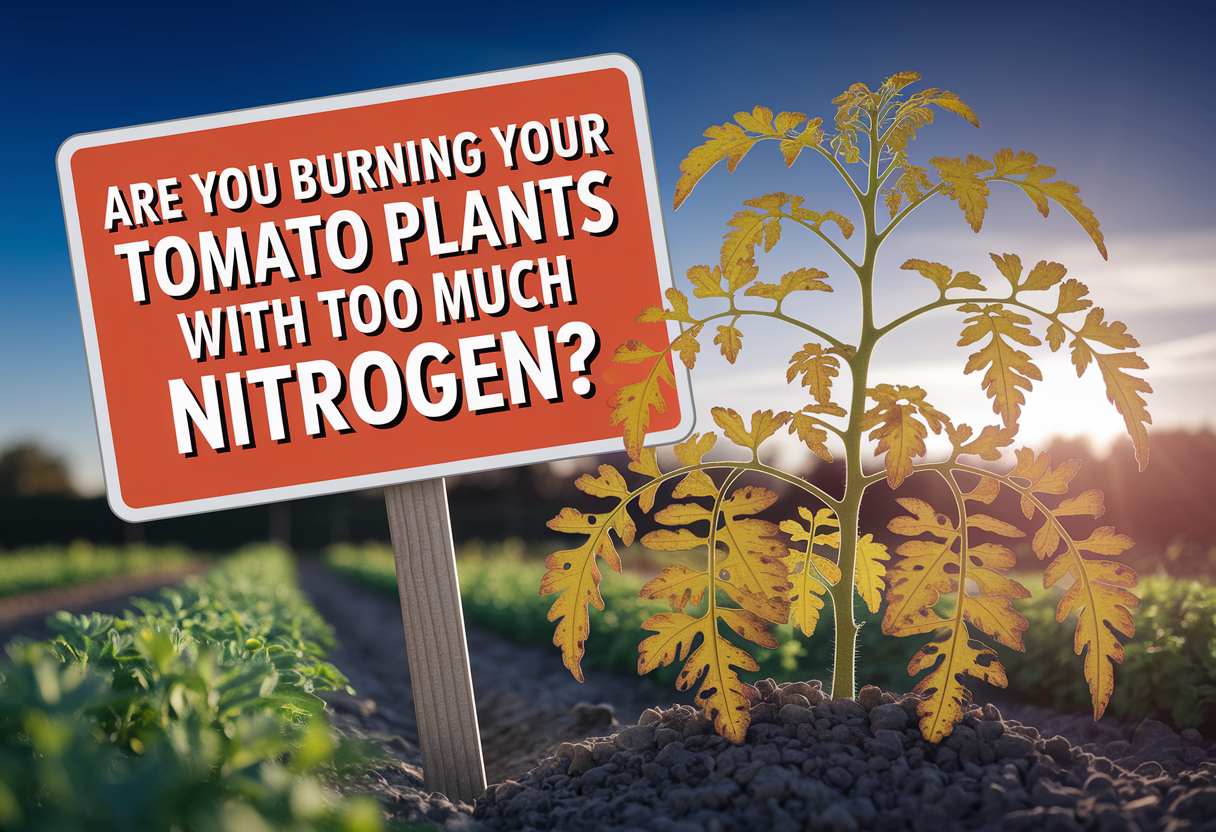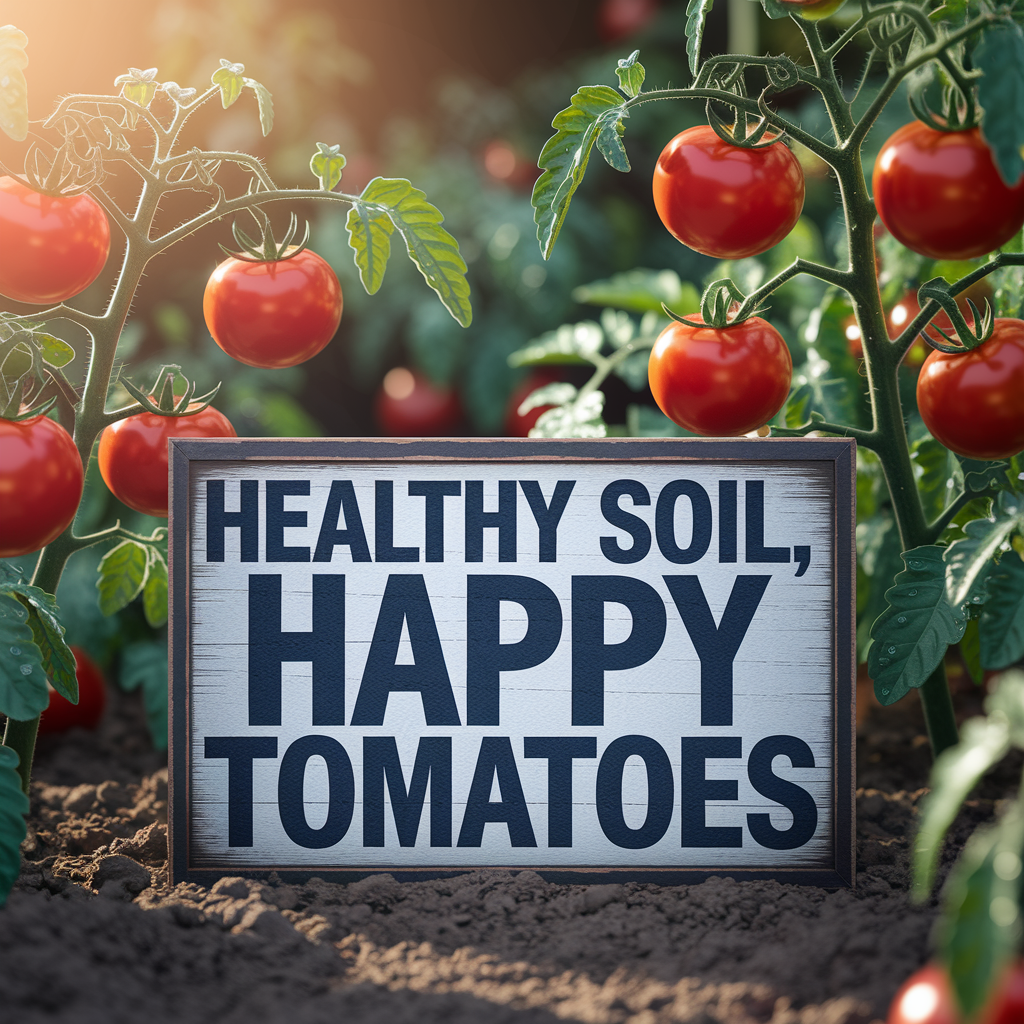
I Used to Wait Until My Tomatoes Were Red—That Was a Mistake
Back when I first started growing tomatoes, I thought the redder, the better. I’d let them hang there until they looked picture-perfect—deep red and slightly soft. But I paid for it. I lost so many tomatoes to splitting, sunscald, bugs, and just plain rot because I waited too long.
Eventually, I learned about something called the breaker stage, and let me tell you—it changed everything. It’s that moment when the tomato just begins to turn from green to pink or red. And once it reaches that point, it can finish ripening off the vine without losing flavor. In fact, it often gets better.
I wrote more about this in my guide to picking tomatoes at the right time if you want to dive deeper into why timing matters so much.
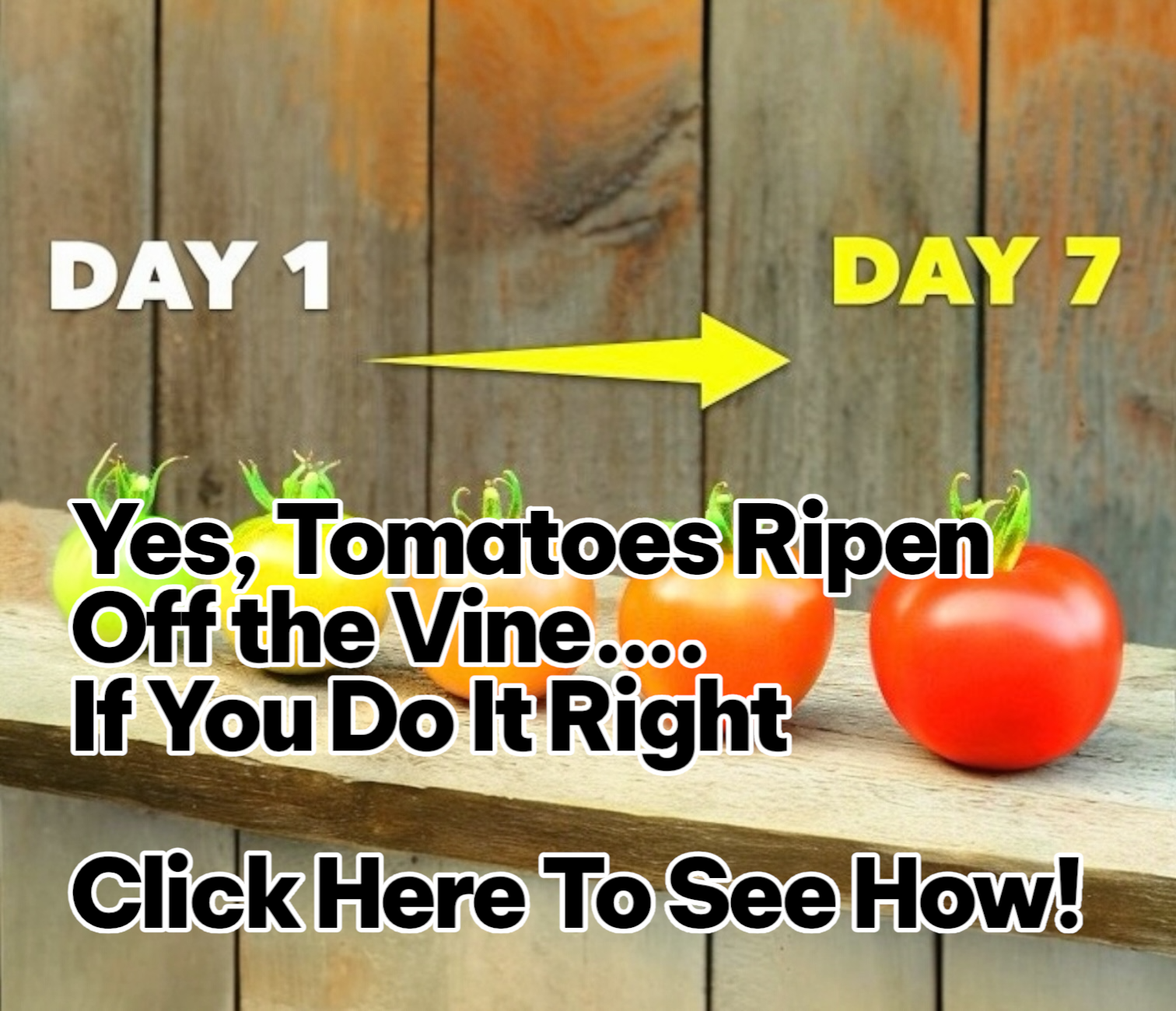
What Is the Breaker Stage, Anyway?
The breaker stage is when the tomato is no longer fully green—it starts showing color, usually about 30% pink, red, or orange, depending on the variety. That little splash of color signals that it’s entered the ripening phase and no longer needs to stay attached to the plant.
This stage is kind of like the tomato’s green light to say, “Hey, I’m good to go from here.” Nutrients and sugars stop flowing from the plant, and the tomato begins producing ethylene gas, which handles ripening on its own.
For some tomato types, the breaker stage is super obvious—especially beefsteaks and slicers. But for smaller or yellow/orange varieties, you’ve got to look closely. Once I learned to spot it, harvesting got easier and way more productive.
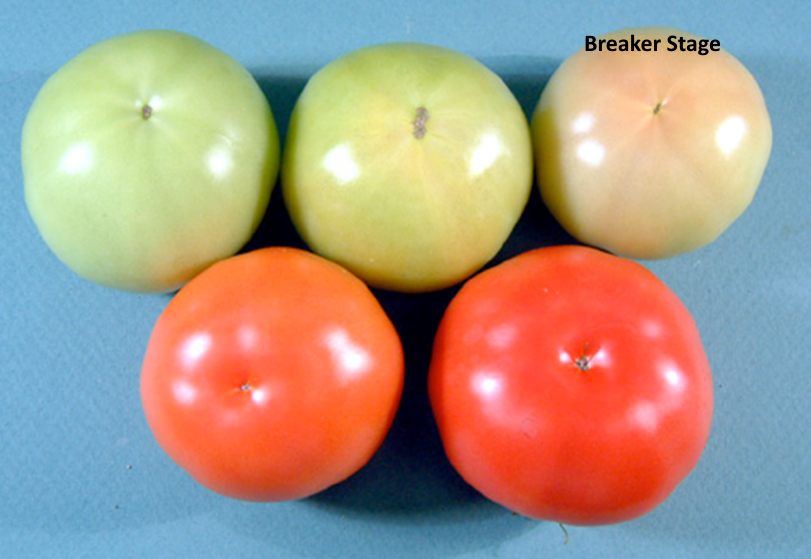
How to Spot Breaker Stage Tomatoes Easily
Here’s how I know a tomato has hit the breaker stage:
- Color Shift: It starts turning pinkish or orangey, usually at the blossom end first.
- Soft Snap Test: A gentle twist or tug, and it detaches with little resistance.
- Still Firm: It feels firm in the hand—not mushy, not rock hard.
- No Shine: Fully green tomatoes tend to be glossy; breaker stage tomatoes lose that shine.
When I’m scanning my vines in the early morning (which is the best time, by the way), I always look for that slight blush of color. It’s subtle at first, but once you get the hang of it, you’ll see it from a mile away.
Why Tomatoes Ripen Better Off the Vine After Breaker Stage
This one surprised me when I first learned it, but it makes total sense. Once a tomato hits the breaker stage, ripening becomes a solo act. It no longer needs the plant’s help. In fact, letting it hang out too long on the vine can cause more harm than good.
Here’s why I pick at breaker stage now:
- Sunscald: I lost so many tomatoes to harsh afternoon sun—now I don’t have to worry.
- Critters: Birds and bugs love ripe tomatoes. They don’t touch breaker stage ones.
- Splitting: Overripe tomatoes absorb water too fast and burst. Breaker stage = less risk.
I ripen mine indoors on a kitchen towel or shallow basket, and the flavor? Still rich, sweet, and just as juicy as if they’d stayed on the plant.
You can also check out my tips for ripening tomatoes indoors the right way so they don’t turn bland or rubbery.

Benefits of Picking at the Breaker Stage
Once I started picking at this stage, everything improved. Here’s what I noticed:
- Fewer Lost Tomatoes: Almost zero splitting or bug bites
- Healthier Plants: Less branch breakage from heavy fruit
- More Fruit: Plants redirected energy into new growth
- No Rush to Eat: Tomatoes last longer and ripen evenly indoors
- Stress-Free Harvesting: I pick gradually, not all at once
I’ve had years where heatwaves ruined half my crop—but not anymore. Picking at the breaker stage lets me bring tomatoes inside before things go wrong. If you’re growing during hot summers, this one tip can seriously save your harvest.
Breaker Stage Harvesting Helped Me Get More Tomatoes
I didn’t expect this when I started harvesting earlier, but it turns out picking at the breaker stage doesn’t just protect the tomatoes I already have—it actually increases how many I get.
Here’s what happened:
- My plants stopped putting energy into ripening older fruit.
- They started pumping out new blooms and new tomatoes faster.
- I stretched my harvest season longer than ever before.
When the branches aren’t weighed down with heavy fruit, they don’t snap, sag, or stress out. That means the plant stays healthier and more productive. You’ll get more tomatoes—not just better ones.
If you’re trying to boost your yield, I’ve also written about how to grow tomatoes faster with 10 tricks that really work. This one’s on that list.

Can You Harvest Too Early? (Yes, But Not at Breaker Stage)
Now I get it—some folks are nervous about picking too early. I’ve done that too. I’ve picked green tomatoes thinking they’d ripen up just fine. And guess what? Most of them didn’t. They stayed sour, chalky, or turned weird colors.
But breaker stage tomatoes are different.
They’ve already started the ripening process naturally, so once they’re off the vine, they just keep going like nothing happened. Picking before that stage? That’s where things go wrong.
Here’s a quick cheat sheet:
- Fully green? Don’t pick it yet.
- Color showing + soft tug releases it? That’s your cue.
The more you do it, the more confident you’ll get with timing. Trust your eyes and your fingers.
Best Time of Day to Harvest Tomatoes at the Breaker Stage
Here’s something that’s often overlooked but definitely makes a difference—when you pick matters too.
After years of trial and error, I found that early morning is the best time. That’s when the temps are cooler, the fruit is firmer, and there’s less sun stress. Plus, bugs and critters are still waking up, so you beat them to it.
Avoid the afternoon sun—especially during heat waves. Tomatoes soften faster and detach too easily when they’re hot, which means they’re more likely to bruise or split during harvest.
I explain why this works better (and why I always do it now) in my full article on picking tomatoes in the morning.

How to Finish Ripening Tomatoes Indoors Like a Pro
Once I bring my breaker stage tomatoes inside, here’s exactly what I do to get them to ripen perfectly:
- Keep them room temp: Around 68–72°F is ideal.
- Lay them in a single layer: On a towel, not stacked, to prevent bruises.
- No fridge! Refrigerating before they’re fully ripe kills flavor.
- Check daily: Rotate and remove any that over-soften or mold.
- Paper bag trick: If I need faster ripening, I toss a banana in a paper bag with the tomatoes.
Within a few days, they’ve turned that rich, juicy red we all want—no vine required.
If you’ve ever had issues with underripe tomatoes indoors, check out my deeper dive into indoor ripening tips.
Breaker Stage and Tomato Splitting—What I’ve Noticed
This was one of the biggest benefits I noticed after switching to breaker-stage harvesting: almost no more splitting.
Before, I’d lose tomatoes every time we got a big rain or I accidentally overwatered. They’d balloon up with moisture and split down the sides like they’d popped under pressure.
Now?
- I pick before heavy rain hits.
- I avoid sudden water changes during ripening.
- And I give my plants a lot less stress.
Tomatoes that have already started ripening off the vine don’t soak up extra water, so there’s way less risk of them splitting. If you’ve been dealing with this problem, also check out the article on overwatering tomato plants and how to fix it.
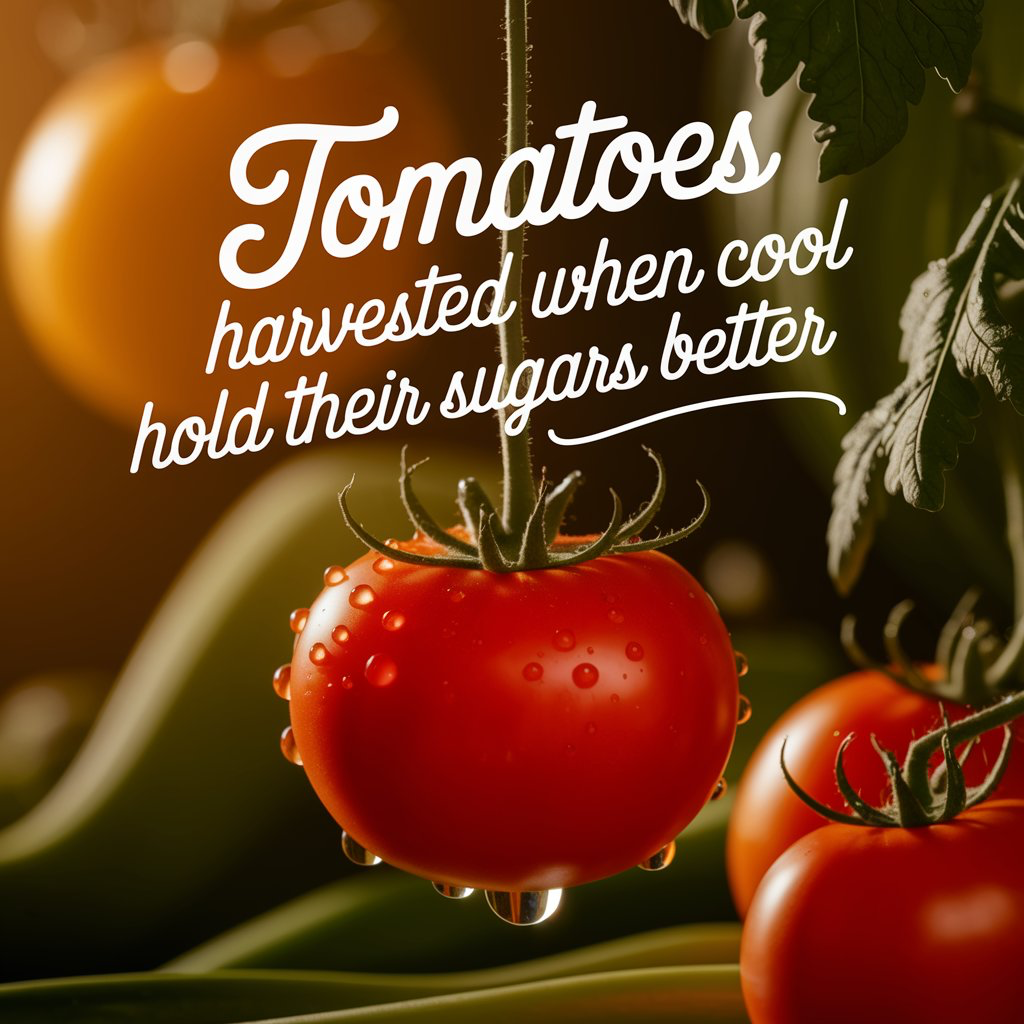
What About Cherry Tomatoes? Do They Have a Breaker Stage?
Absolutely! Cherry tomatoes ripen much faster, but they still go through a breaker stage—you just have to watch more closely because the change happens fast.
Here’s what I look for:
- A hint of blush where it was green yesterday
- The tomato gives just a little when I press it
- A light tug makes it release easily
Cherry tomatoes don’t need to stay on the vine until they’re deep red. In fact, once they hit the breaker stage, they’ll keep ripening just fine on your kitchen counter. I often line mine up on a paper towel next to a window (but out of direct sun), and within 1–2 days, they’re ready to eat.
For anyone growing cherry varieties, you might also like our tips on why your cherry tomatoes aren’t turning red fast enough—breaker stage could be part of the fix.
Do All Tomato Varieties Show the Breaker Stage the Same Way?
Not quite. Each tomato variety has its own little quirks, and I’ve learned that some make it easier than others.
Here’s what I’ve noticed:
- Beefsteak and slicers: Obvious blush, easy to spot
- Roma and plum: More subtle—look for a light orange-pink hue
- Heirlooms: Some are trickier since they come in all kinds of colors
- Yellow or green varieties: You have to feel for softness and detachment more than color
The more varieties you grow, the more you’ll get to know their unique signs. I keep a little notebook during the growing season to track when I picked each variety at the breaker stage and how it turned out. It’s a nerdy habit, but it’s helped me a lot.
If you’re trying new tomato types, be sure to check out my roundup of the best tomato varieties to grow — some ripen better than others once picked.

My Takeaway After Switching to Breaker Stage Harvesting
If you’re still waiting until your tomatoes are fully red and soft on the vine, let me just say this: try harvesting at the breaker stage. Even for just a few fruits. It made a huge difference in my garden—less waste, better flavor, more control over the whole process.
I no longer panic when I see storm clouds rolling in or birds pecking at the ripest ones. I pick early, ripen inside, and still get that juicy, sun-sweet flavor every time.
Breaker stage tomatoes are the secret sauce to a stress-free tomato harvest, and once you get the hang of spotting that stage, you’ll never go back.
As an Amazon Associate we earn from qualifying purchases through some links in our articles.

